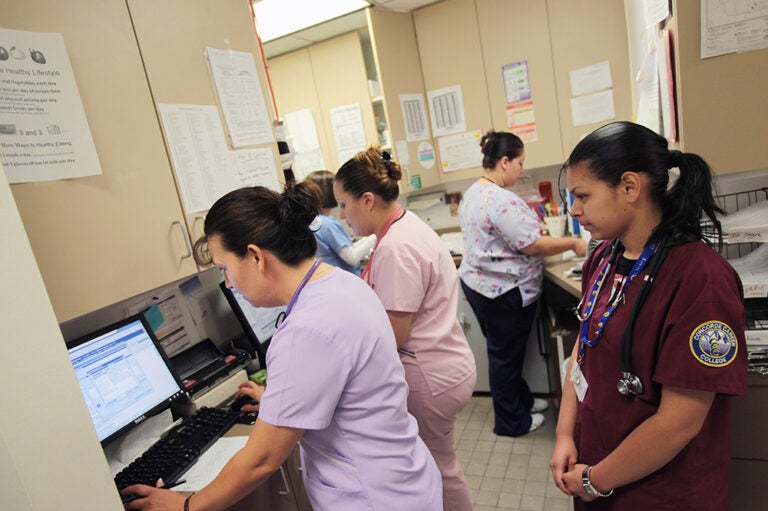As a result of longer life expectancy and lower birth rates, the population of the United States is getting older. By 2030, for the first time in U.S. history, those above the age of 65 will outnumber those below the age of 18. That trend — which has been underway for quite some time — has profound implications across our society, key programs within the federal budget, and the fiscal outlook as a whole.
It makes sense that as the population ages, their participation grows in federal assistance programs for older Americans, such as Social Security and Medicare. Half of a century ago, Social Security and Medicare spending, combined, accounted for 24 percent of the federal budget. Now, those critical programs account for 36 percent of federal spending. That trend will only continue, which will make sustaining those programs more difficult. Looking ahead, there are important factors for policymakers to consider as the nation’s demographics continue to change.
Life Expectancy Is Increasing
Advances in healthcare, better health and habits hygiene, and access to safe drinking water and food have extended the lives of people well beyond what was standard just a few generations prior. Specifically, as healthcare improves, so does the length of life. In 1944, men at the age of 65 were expected to live, on average, another 13 years, and women another 15 years. By 2054, that life expectancy after age 65 will increase to 21 years for men and 23 years for women.
As life expectancy increases, the population of those age 65 or older will continue to expand. In 2015, that age group constituted 14 percent of the population; by 2035, according to the United States Census Bureau, that proportion will rise to 22 percent.
Birth Rates Are Near Historical Lows
As older adults make up a larger share of the population, the share of younger Americans is shrinking. Historically, American women had their first child at a relatively young age. In 1970, the average age for an American woman to have her first child was 21. Societal and economic changes have now shifted the average age to 27. Delaying motherhood has contributed to women having fewer children in total. According to the Pew Research Center, there has been a sharp decline in families with four or more children. Societal factors also play a role in the decline of the birth rate. Scholars at the National Bureau of Economic Research found that as women entered the work force in larger numbers, the fertility rate declined. As a result of the abovementioned factors, the U.S. birth rate has dropped from 16.5 per 1,000 people in 1990 to 10.6 in 2024.
The Impact of Our Aging Population on Social Security and Medicare
Social Security is the most common source of retirement support for Americans, and the largest program in the federal budget. Social Security is funded for through a dedicated payroll tax, paid by both employer and employee. The taxes collected funnel into a trust fund, meaning the taxes coming in from today’s workers pay for the benefits of today’s retirees. And when today’s workers retire, their benefits will be paid for by the next generation of workers’ taxes. That means the ratio of workers per beneficiary is an important factor in the stability of the Social Security trust fund. In 1965, there were 4.0 workers for every beneficiary of Social Security; the Social Security Administration now projects that ratio will fall to 2.2 workers for every beneficiary by 2045.
As a result of the diminished worker-to-beneficiary ratio and a longer span in which retirees are collecting Social Security benefits, Social Security’s Trustees project that the Old-Age and Survivors Insurance (OASI) Trust Fund will be depleted in 2033, at which point 71 million beneficiaries would face an automatic cut of 23 percent to their benefits.
To account for longer life spans, in 1983 the federal government legislated a gradual increase in the full retirement age from 65 to 67. With life expectancy expected to continue rising, another increase in the retirement age could be considered to improve the program’s solvency. That approach could help boost the worker-to-beneficiary ratio as more individuals remain in the workforce. Payroll tax revenues from those workers would also help with the solvency of the Social Security program.
Medicare will similarly be affected by the growing older adult population both in terms of participation and because there is a direct correlation between age and healthcare costs. According to the Centers for Medicare & Medicaid Services (CMS), per capita costs for those 85 years old or older are almost twice as high as for those 65 to 84 years of age.
As the population ages and the number of Medicare enrollees grows — along with the cost of care per enrollee due to rising prices and use of services — total Medicare spending will also grow. According to CMS, growth in Medicare spending will average 9.7 percent per year until 2030, when every baby boomer would be older than age 65. Such spending, which measures 3.1 percent of gross domestic product (GDP), would eclipse 5 percent of GDP in the next two decades. In fact, the Medicare Trustees project that Medicare’s Hospital Insurance Trust Fund will be depleted by 2033, leading to an 11 percent shortfall in payments for medical services.
Conclusion
The aging of the U.S. population will continue in the decades ahead. As a result, left unaltered, critical health and retirement security programs to assist older Americans are in deep financial trouble. The good news is that many solutions exist to reform Social Security and Medicare that will help put them on a more sustainable path. Careful consideration of the demographic drivers, factors, and trends can help policymakers address the sustainability of Social Security and Medicare, putting those programs — and that nation’s budget — on a stronger path for the future.
Image credit: Octavio Jones/Getty Images
Further Reading
Quiz: How Much Do You Know About Healthcare in the United States?
The United States has one of the largest and most complex healthcare systems in the world. Take our healthcare quiz to see how much you know about the cost and quality of the U.S. healthcare system.
The Fed Reduced the Short-Term Rate Again, but Interest Costs Remain High
High interest rates on U.S. Treasury securities increase the federal government’s borrowing costs.
How Did the One Big Beautiful Bill Act Change Healthcare Policy?
The OBBBA adds significantly to the nation’s debt, but its healthcare provisions lessen that impact by $1.0 trillion.


